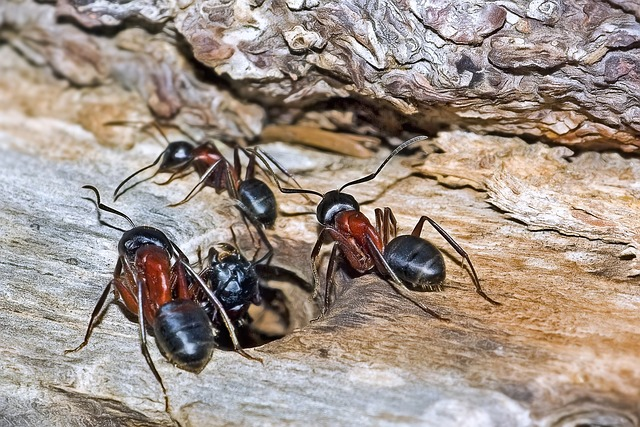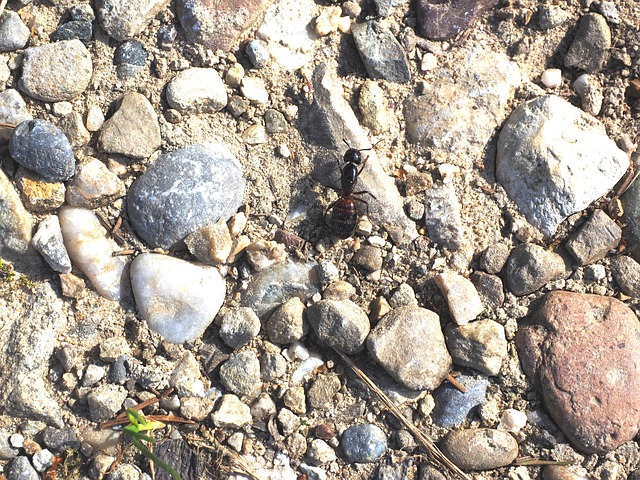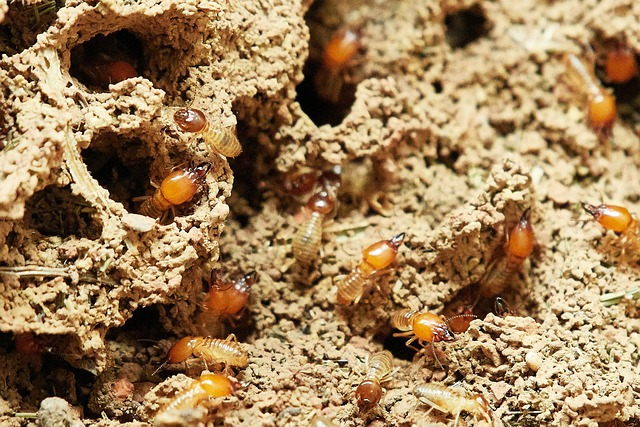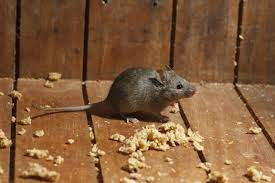Oklahoma carpenter ants
These ants (Camponotus schmitzi) are a species of carpenter ant that is native to the United States. They are found in a variety of habitats, including wooded areas, forests, and urban settings, throughout much of the central and eastern United States, including Oklahoma.
Carpenter ants are giant ants that are known for their ability to tunnel through the wood in order to create nests. They are often attracted to moist or damaged wood, and they can cause significant damage to buildings and other structures if they establish a nest inside the wood.
Oklahoma carpenter ants are typically black or brown in color and range in size from about 3/8 to 1/2 inch in length. They are distinguishable from other carpenter ant species by their relatively small size and the presence of a single node (a small bump) on their petiole (the “waist” between the thorax and abdomen).
Like other carpenter ants, Oklahoma carpenter ants are social insects that live in colonies with a hierarchical structure. The colonies are headed by a queen ant, which is responsible for reproducing and laying eggs, and there are also workers and soldiers within the colony. The workers are responsible for foraging for food, tending to the young, and helping to maintain the nest, while the soldiers defend the colony from predators.

Fire ants
Fire ants are a type of stinging ant that is known for their aggressive behavior and venomous sting. There are many different species of fire ants, but the most common and well-known species is the red imported fire ant (Solenopsis Invicta), which is native to South America but has been introduced to many other parts of the world, including the United States.
Fire ants are reddish-brown in color and range in size from about 1/8 to 1/4 inch in length. They are distinguished by their elongated, segmented bodies and their distinctive reddish-brown coloration. Fire ants are social insects that live in colonies consisting of a queen ant, workers, and soldiers.
Fire ants are known for their aggressive behavior and venomous sting. When threatened, fire ants will bite and then sting, injecting a venomous substance into the skin that can cause a painful, burning sensation. Some people may have allergic reactions to fire ant venom, which can be severe and potentially life-threatening.
Fire ants are found in a variety of habitats, including grasslands, forests, and urban areas. They are often attracted to moist or sunny areas and are commonly found in gardens, lawns, and near sources of water. They are known to be pests because of their aggressive behavior and the damage they can cause to plants and structures.

When we lived in Texas, the fire ants were a pile of ants you did not want to step in. If you did find yourself in the pile, you most likely went to the water hose and rinse them off and sometimes ended up in the emergency room due to the painful stings. Can you say OUCH!
What is a form of ant control?
There are several methods that can be used to control ant populations and prevent them from becoming a nuisance. Some common methods of ant control include:
- Physical removal: This can be as simple as using a broom or dustpan to sweep ants out of the house or using a vacuum cleaner to remove them.
- Traps: There are a variety of ant traps on the market that use bait to attract and kill ants. These can be effective in reducing ant populations, but they may not be suitable for all ant species.
- Insecticides: Insecticides can be used to kill ants and other pests. There is a wide range of insecticides available, including contact insecticides, which kill ants on contact, and residual insecticides, which leave a residue that continues to kill ants for a period of time after application.
- Exclusion: This involves sealing up any cracks or holes in the structure of a building or home to prevent ants from entering.
- Natural remedies: Some people prefer to use natural remedies to control ants, such as using essential oils or homemade solutions made from ingredients like vinegar or baking soda.
It is important to carefully follow the instructions on any pest control product and to use caution when applying insecticides, as they can be harmful to humans and pets if not used properly. In addition, it is often helpful to identify the species of ant that is causing the problem, as different species may require different control methods.
What are ants’ food sources?
Ants are omnivorous insects that feed on a wide range of foods, including plants, seeds, fruits, nectar, and insects. Many species of ants are scavengers and will feed on a variety of organic matter, including dead insects and other animals. Some species of ants are also known to feed on honeydew, a sweet, sticky substance produced by certain insects like aphids.
In addition to foraging for food, many species of ants also cultivate their own food sources. For example, some species of ants keep and tend to aphids, which produce honeydew, as a food source. Others cultivate fungi or other types of plants for food.
Ants have a highly organized social structure and work together to gather and distribute food within their colonies. Foraging ants will often leave a chemical trail behind as they search for food, which other ants can follow back to the food source. This helps the colony locate and exploit a wide range of food sources.
Are there really red imported fire ants?
The red imported fire ant (Solenopsis Invicta) is a species of stinging ant that is native to South America but has been introduced to many other parts of the world, including the United States. It is one of the most well-known and widespread species of fire ants.
Red imported fire ants are reddish-brown in color and range in size from about 1/8 to 1/4 inch in length. They are distinguished by their elongated, segmented bodies and their distinctive reddish-brown coloration. Red imported fire ants are social insects that live in colonies consisting of a queen ant, workers, and soldiers.
Red imported fire ants are known for their aggressive behavior and venomous sting. When threatened, they will bite and then sting, injecting a venomous substance into the skin that can cause a painful, burning sensation. Some people may have allergic reactions to fire ant venom, which can be severe and potentially life-threatening.
Red imported fire ants are found in a variety of habitats, including grasslands, forests, and urban areas. They are often attracted to moist or sunny areas and are commonly found in gardens, lawns, and near sources of water. They are known to be pests because of their aggressive behavior and the damage they can cause to plants and structures.
Is there such a thing as Carpenter ant damage?
You better believe there is! Carpenter ants are giant ants that are known for their ability to tunnel through the wood in order to create nests. They are often attracted to moist or damaged wood, and they can cause significant damage to buildings and other structures if they establish a nest inside the wood.
The damage caused by carpenter ants is often referred to as “silent damage” because it is not immediately visible and may not be noticed until it has become extensive. Carpenter ants do not consume wood as termites do; rather, they tunnel through it and remove the wood fibers, creating smooth, clean tunnels and galleries as they go. These tunnels and galleries can weaken the structural integrity of wood beams, joists, and other structural elements, and if left unchecked, carpenter ant damage can become significant.
In addition to damaging the wood, carpenter ants can also cause damage to other materials in a structure, such as insulation, plaster, and drywall, as they create tunnels and galleries. They can also contaminate food and other household items if they establish a nest in the kitchen or other areas where food is stored.
To prevent carpenter ant damage, it is important to keep wood in and around the home dry and in good repair, seal any cracks or openings that could allow ants to enter, and remove any dead or decaying wood from the property. If carpenter ants are suspected, it is important to have the problem professionally evaluated and treated as soon as possible to minimize the potential for damage.
Are you wondering what do termites look like in Oklahoma?
Termites in Oklahoma are typically small, winged insects about 1/4 to 1/2 inch long. They are similar to any other state, they reside in OK 🙂 They have a pale, yellowish-brown to dark brown color and a segmented body with six legs. The wings of termites are equal in size and shape and are longer than their body. They have a narrow waist and a small head with mandibles, or jaws, used for chewing wood. Termites are often mistaken for ants, but they can be distinguished by their straight antennae and uniform body shape.




